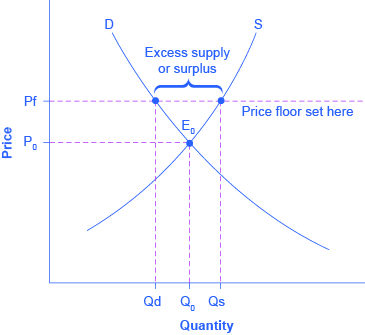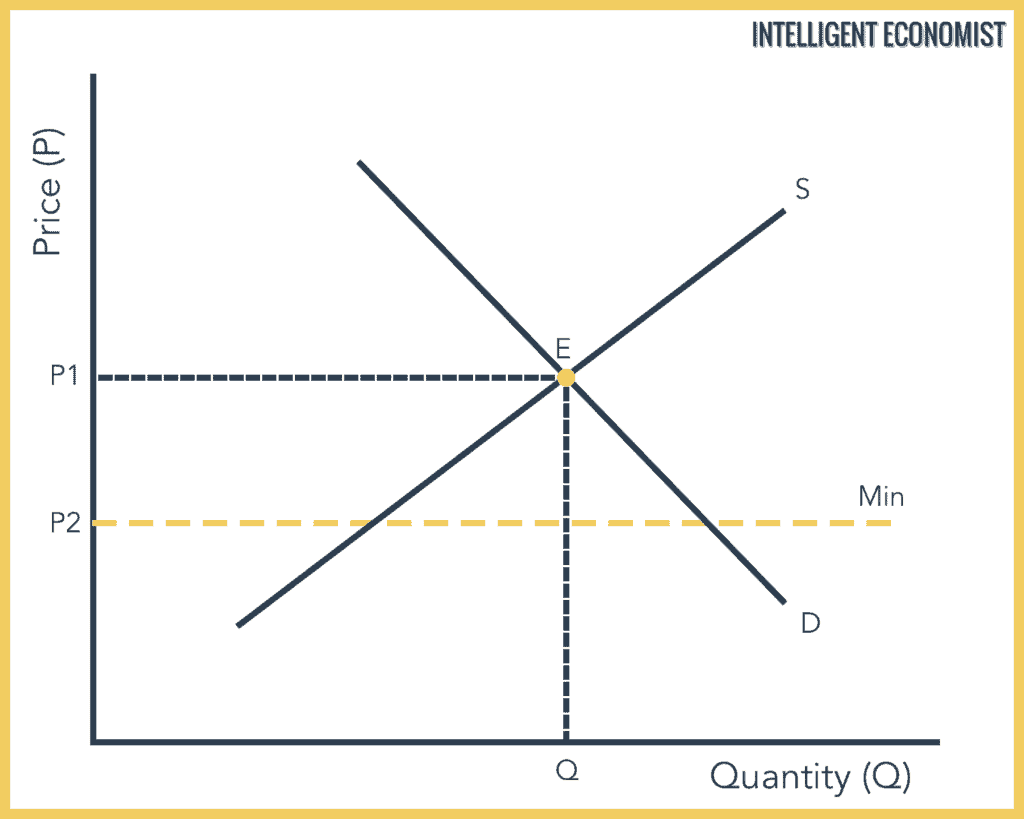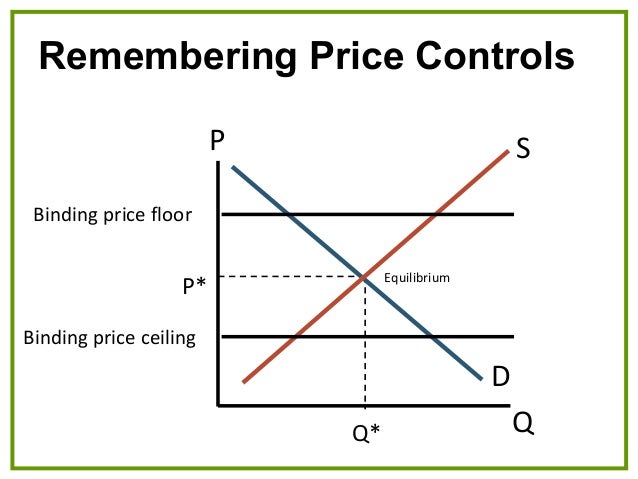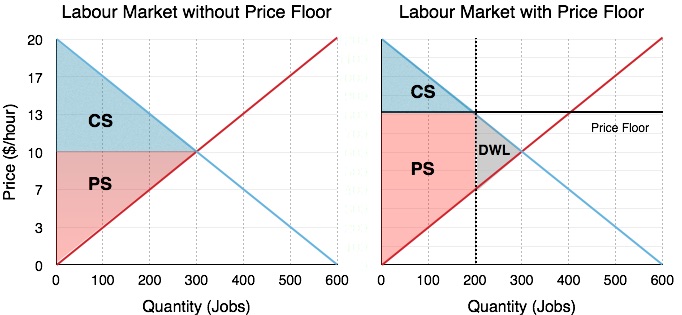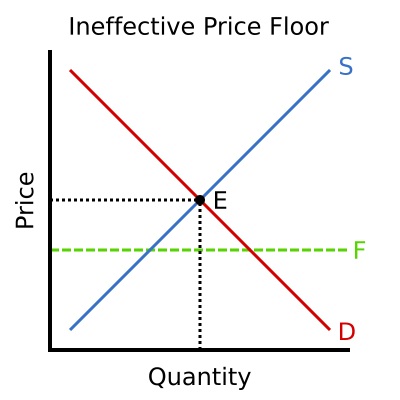Binding Price Floor Minimum Wage

Unfortunately it like any price floor creates a surplus.
Binding price floor minimum wage. A price floor is the lowest price that one can legally charge for some good or service. Because it takes many years before newly planted orange trees bear fruit the supply curve in the short run is almost vertical. The government has instituted a legal minimum price of 1 80 each for donuts. A price floor must be higher than the equilibrium price in order to be effective.
The price floors are established through minimum wage laws which set a lower limit for wages. For instance if the minimum wage in a particular state is 12 and a company would like to pay their employees 14 per hour this is not an issue this is not a binding price floor. Almost all economies in the world set up price floors for the labor force market. The equilibrium price commonly called the market price is the price where economic forces such as supply and demand are balanced and in the absence of external.
How a minimum wage might effect the labor market watch the next lesson. A minimum wage law is the most common and easily recognizable example of a price floor. The number of workers who want to work will be greater than the number of jobs available. In the long run farmers can decide whether to plant oranges on their land to plant something.
Higher than the equilibrium price. Because this is the most popular and recognizable example of a price floor we will concentrate on it for the rest of this. In modern western countries labor is the primary recipient of price floors 1 in particular the government imposes a minimum wage making it illegal for an employer to pay a worker less than a certain amount per hour. Legislating a minimum wage is commonly seen as an effective way of giving raises to low wage workers.
If a country has the comparative advantage in producing wooden furniture then with free trade. Perhaps the best known example of a price floor is the minimum wage which is based on the view that someone working full time should be able to afford a basic standard of living. It is usually a binding price floor in the market for unskilled labor and a non binding price floor in the market for skilled labor. If the minimum wage is a binding price floor then.
A good example of how price floors can harm the very people who are supposed to be helped by undermining economic cooperation is the minimum wage. Conversely if a company would like to pay employees 10 this will not work because that amount is lower than the price floor in this case it is a binding. A price floor is the other common government policy to manipulate supply and demand opposite from a price ceiling.

